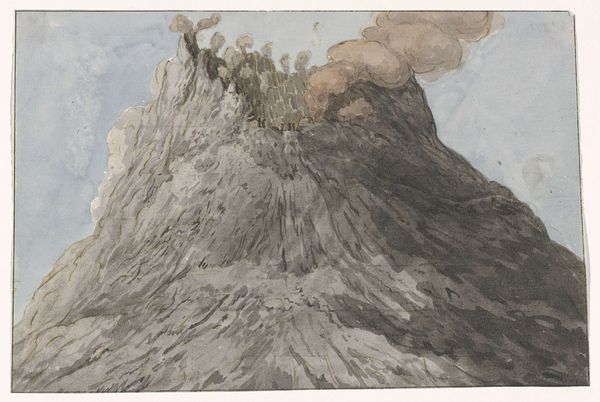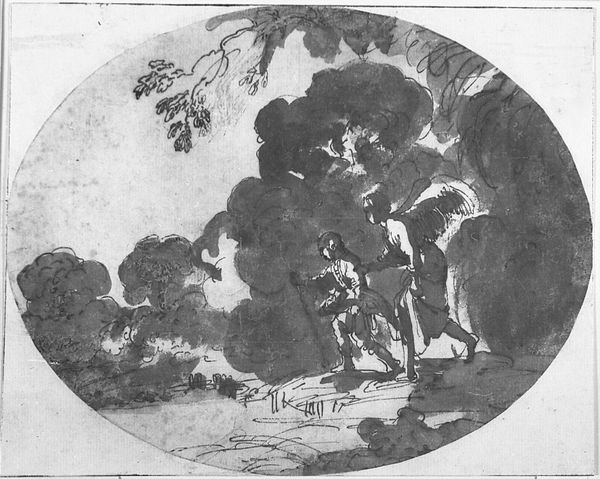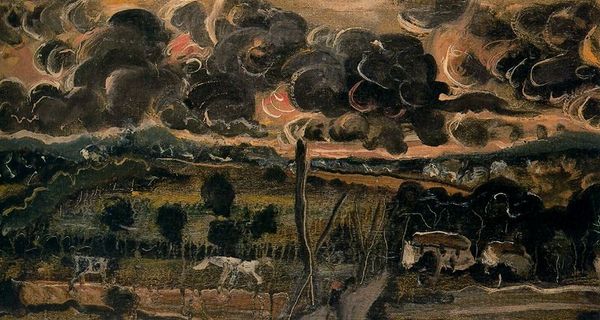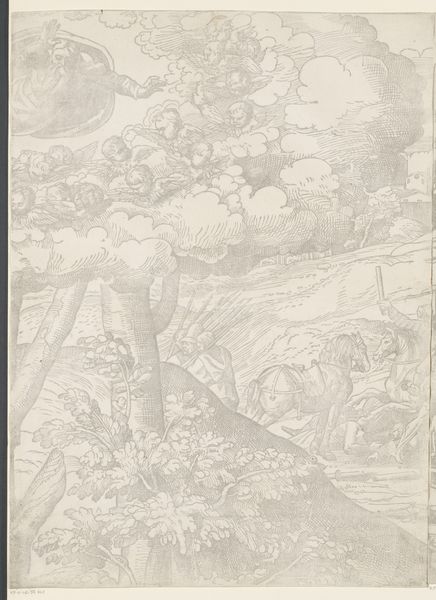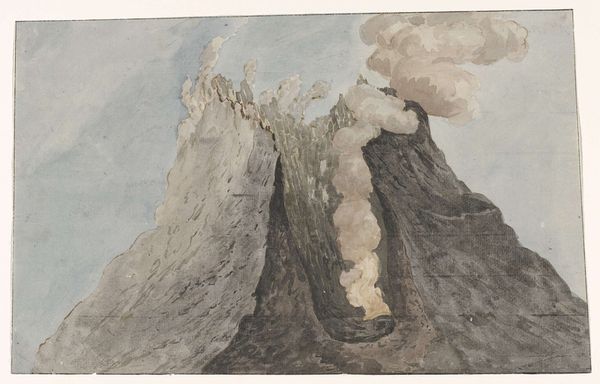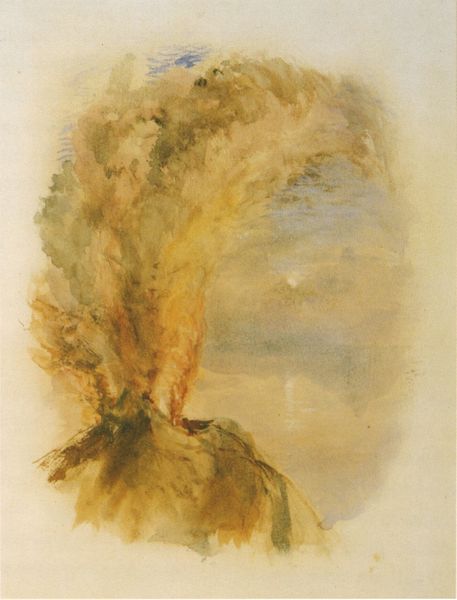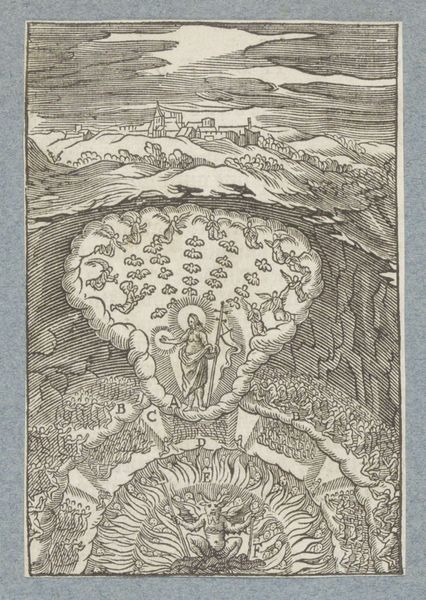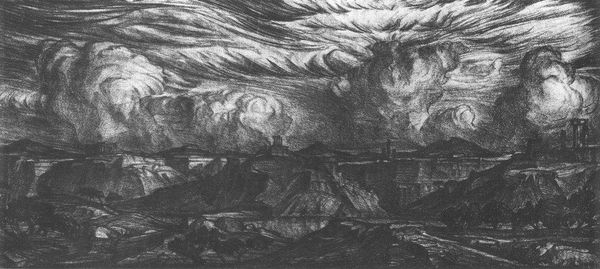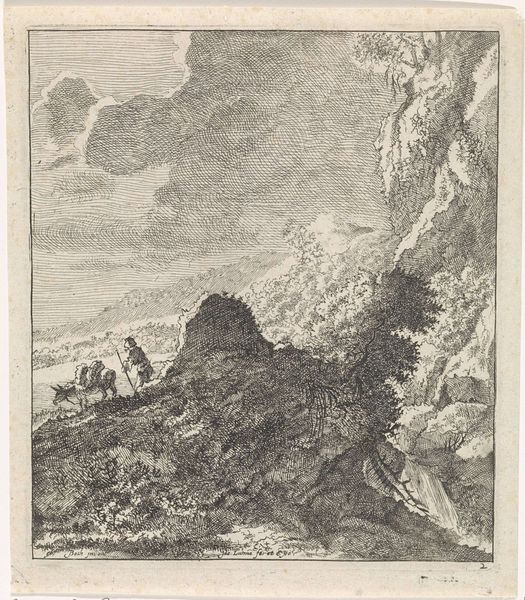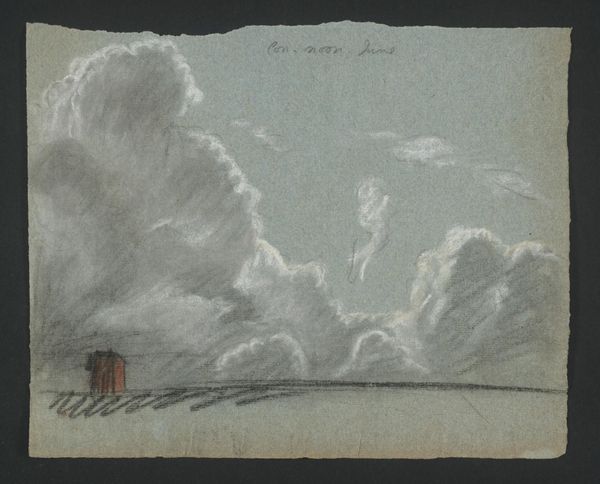
Copyright: Public domain
Editor: This is "Cloud" by Nicholas Roerich, painted in 1913, using watercolor. The billowing clouds take up most of the composition, and I’m immediately struck by their texture. How would you interpret the forms and use of color in this piece? Curator: Notice the chromatic scale – a symphony in muted greys, greens, and whites, structured to create a hierarchy of visual interest. The cloud formation, as the titular element, commands attention through its sheer mass, yet also directs the eye upward, following a carefully orchestrated visual pathway. The formal elements like line and texture contribute to this dynamic interplay, inviting continuous decoding of Roerich's visual language. Do you perceive a geometric foundation underlying what seems an amorphous subject? Editor: I do now that you mention it. There is definitely a sense of organized, almost architectural structure to the clouds. Curator: Precisely. The strategic juxtaposition of texture – from the wispy clouds to the relatively flat rendering of the land and sky – accentuates their structural weight. Color acts in concert. A question for you: if the clouds were not positioned with a solid landform beneath, would it change the effect and why? Editor: Yes, I think so. Grounding the image gives them so much more weight and form; if not, they'd lose some of the impact, some of the formal tension. Curator: Agreed. This tension is vital to understand not merely "what" we are seeing, but "how" it is being communicated visually through composition and the very materiality of the paint itself. Editor: Thank you, it’s helpful to break it down into elements. Curator: Indeed. Focusing on its parts is the first step towards comprehending a unified artistic creation.
Comments
No comments
Be the first to comment and join the conversation on the ultimate creative platform.

